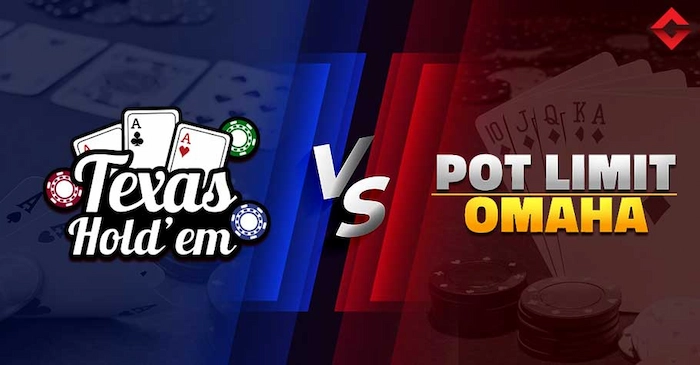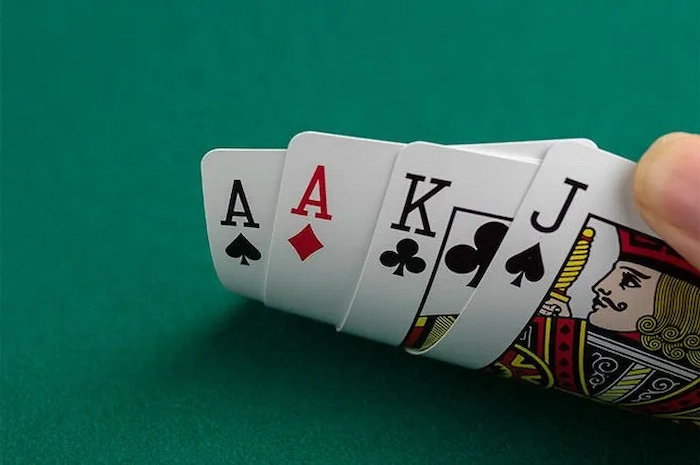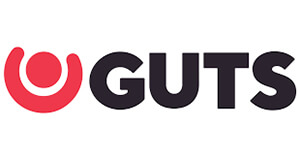As we step into 2025, the choice between No-Limit Texas Hold’em and Pot-Limit Omaha is still as debated as it was during the poker boom years.
While both games share fundamental similarities, they diverge significantly in terms of gameplay, strategy, and player experience. This article explores the key differences, advantages, and considerations for players deciding which game to embrace in the coming year.
 Understanding the Basics
Understanding the Basics
No-Limit Texas Hold’em – NLHE
No-Limit Texas Hold’em is easily the most recognised form of poker worldwide. It has gained immense popularity through televised and streamed tournaments, online platforms, and its status as the WSOP Main event.
Hole Cards: Each player is dealt two hole cards. These cards are unique to each player and cannot be seen by other players.
Community Cards: Five community cards are revealed over the last three betting rounds: three on the flop, one on the turn, and one on the river. Players combine their hole cards with these community cards to form the best possible five-card poker hand.
Betting Structure: Players can bet any amount up to their entire stack at any time during their turn as long as it is more than one big blind. This no-limit structure creates high-pressure scenarios and encourages aggressive play which entertains both the players and the rail.
Pot-Limit Omaha (PLO)
PLO has gained a lot of traction in recent years, particularly among more experienced players looking for a more complex and action-oriented game than NLHE.
It is also considered a less solved game than NLHE giving players more of a hope that they can catch up to their more experienced rivals.
Hole Cards: Each player receives four hole cards instead of two.
Community Cards: Just like in NLHE, five community cards are dealt over three betting rounds.
Betting Structure: Players can only bet up to the current size of the pot at any given time. This means that as the pot grows, so do the potential bets, leading to larger pots and potentially massive swings.
Key Differences
Hand Strength and Composition
One of the most significant differences between NLHE and PLO lies in how hand strength is evaluated.
NLHE Hand Evaluation:
In NLHE, players can use any combination of their two hole cards and the five community cards to make their best hand. This flexibility allows for a wide range of strategies but still often leads to more predictable hand strengths.
For example:
- A pair of aces is a strong hand pre-flop but it will become weak if multiple players see the flop.
- Bluffing can be more easily pulled off with equities running far apart in many cases, meaning it is often easier to represent a high equity hand than in PLO where equities run much closer together.
PLO Hand Evaluation:
In PLO, players must use exactly two of their four hole cards along with three community cards to make their best hand. This simple rule difference leads to a higher average hand strength and a greater variety of possible hands. The complexity of PLO can be mind boggling.
For example:
- Hands like A-A-K-K (double-suited) are significantly stronger in PLO than in NLHE because they have multiple drawing possibilities.
- The potential for straights and flushes increases dramatically due to having four hole cards.
Complexity and Learning Curve
NLHE: Simplicity for Beginners
NLHE is generally considered easier for beginners due to its straightforward rules and fewer hole cards.
New players can quickly grasp basic strategies such as:
- Starting hand selection
- Position awareness
- Basic betting strategies
This simplicity has made NLHE remain the most popular choice for those taking up poker in the modern era.
PLO: The Challenge of Complexity
PLO’s complexity arises from the additional hole cards and the necessity for players to think about multiple drawing possibilities.
You are welcome to check the best Omaha Poker Sites in 2025.
Mastering PLO often requires more experience and strategic depth. New players may struggle with:
- Evaluating hand strength accurately
- Understanding pot odds in a dynamic betting environment
- Managing risk effectively due to higher variance
 Variance and Risk
Variance and Risk
NLHE: Lower Variance
NLHE has much lower variance because of its fewer combinations and slower gameplay. This makes it an appealing choice for beginners who may prefer a more stable betting environment. Players can jump straight in with a cautious style to avoid facing extreme swings.
PLO: Embracing Higher Variance
In contrast, PLO features higher variance due to its larger number of potential hands and the inevitable massive swings.
The increased action can lead to dramatic ups and downs which is appealing to players who thrive on excitement, but potentially it is intimidating for those who prefer a more stable game.
Strategic Considerations
Playing Styles
NLHE Strategies:
New players in NLHE often adopt tighter strategies, focusing on strong starting hands and calculated aggression. Common strategies include:
- Tight-Aggressive Play – Playing fewer hands but being aggressive when entering pots.
- Positional awareness – Understanding the importance of table position when deciding whether to enter a pot or how much to bet.
- Reading opponents – Paying attention to opponents’ tendencies to exploit weaknesses.
PLO Strategies:
In PLO, however, players are encouraged to play more hands due to the increased potential for strong combinations. Four cards instead of two really does change the game that much.
Effective strategies include:
- Loose-Aggressive Play – Playing a wider range of hands aggressively, capitalising on drawing opportunities.
- Drawing Hands -Prioritising hands that have multiple ways to improve, such as double-suited connectors.
- Pot Control – Managing pot size carefully due to the potential for large swings.
 Bluffing Dynamics
Bluffing Dynamics
Bluffing in NLHE
Bluffing is a crucial element in both games but it operates differently due to betting structures. Just like four cards from two, no limit to pot limit makes the game play significantly different.
In NLHE, players can apply pressure with large bets at any time. Successful bluffing often relies on understanding opponents’ tendencies and recognising when they are likely holding a weak hand.
Bluffing in PLO
In PLO, however, bluffing becomes trickier since bets are limited by the pot size. There’s mostly no blowing your opponent off their hand on the early streets.
This limitation makes it less intimidating for opponents as they may be more willing to call smaller bets if they have drawing hands.
Effective bluffing in PLO usually requires careful consideration of board texture and opponents’ likely holdings. Not an easy task in this four-card variant.
Online Versus Live Play
As we move into 2025, both NLHE and PLO continue to thrive online whilst also maintaining well-supported live scenes.
NL Hold’em & PLO Online:
All online poker platforms offer NL Hold’em and PLO cash games and tournaments. Players can find games at all the stakes you could ever need around the clock, making it accessible regardless of time zone or schedule.
Live Poker Experience:
Live poker offers an entirely different experience characterised by personal interactions, physical tells, and an electric atmosphere that cannot be replicated online. There is no substitute for being able to eyeball your opponents during a hand.
Live NL Hold’em tournaments often draw massive fields with equally huge prize pools due to their popularity. Events like the WSOP continue to be a highlight on the poker calendar.
While less common than NL Hold’em events, live PLO tournaments have gained traction among serious players looking for more action. PLO aficionados and new players will also find more suitable events than was the case even just a few years ago.
The same applies for cash games which often feature deep stacks that allow for intricate strategic play over extended sessions. PLO with a 300 big blind stack is not for the faint-hearted!
Choosing Your Game – Factors to Consider
As you contemplate whether NL Texas Hold’em or Pot-Limit Omaha is right for you now, consider these key factors:
- Experience Level – If you’re new to poker or have limited experience, starting with NLHE should provide a smoother learning curve while still offering plenty of excitement. On the other hand, if you’re an experienced player seeking new challenges or higher variance gameplay, diving into PLO could be rewarding.
- Playing Style – Reflect on your preferred playing style — do you enjoy tight play with calculated aggression? In that case NL Hold’em is likely best. Or do you thrive on loose play with numerous drawing opportunities? PLO is a no brainer here. Your natural tendencies will influence your enjoyment of each game type.
- Game Availability – Evaluate your local card rooms and casinos or online options — are there more opportunities available for one game over another?
As 2024 unfolds, both NL Texas Hold’em and Pot-Limit Omaha offer unique experiences that cater to different types of players.
NL Hold’em remains an excellent choice for newcomers seeking a simpler entry into poker while providing ample opportunities for seasoned pros looking to climb the stakes ladder. Meanwhile, PLO attracts those looking for a deeper strategic challenge with more intense action and greater variance.
Experimenting with both games is a surefire way to enhance your overall skill level and understanding of poker dynamics.
Whether you choose NLHE or PLO this year, both games promise excitement and opportunities for growth in the ever-evolving world of online poker.
- Get the best rakeback deals
- See the best poker promotions
- View the latest poker news
- Get the best No Deposit Poker Bonuses
- Benefit from the biggest poker bonus
- Calculate your rakeback with the rakeback calculator
Terms and conditions apply. New customer offer and 18+ only. Should you require help regarding your betting pattern, please visit www.begambleaware.org



 Variance and Risk
Variance and Risk Bluffing Dynamics
Bluffing Dynamics




















